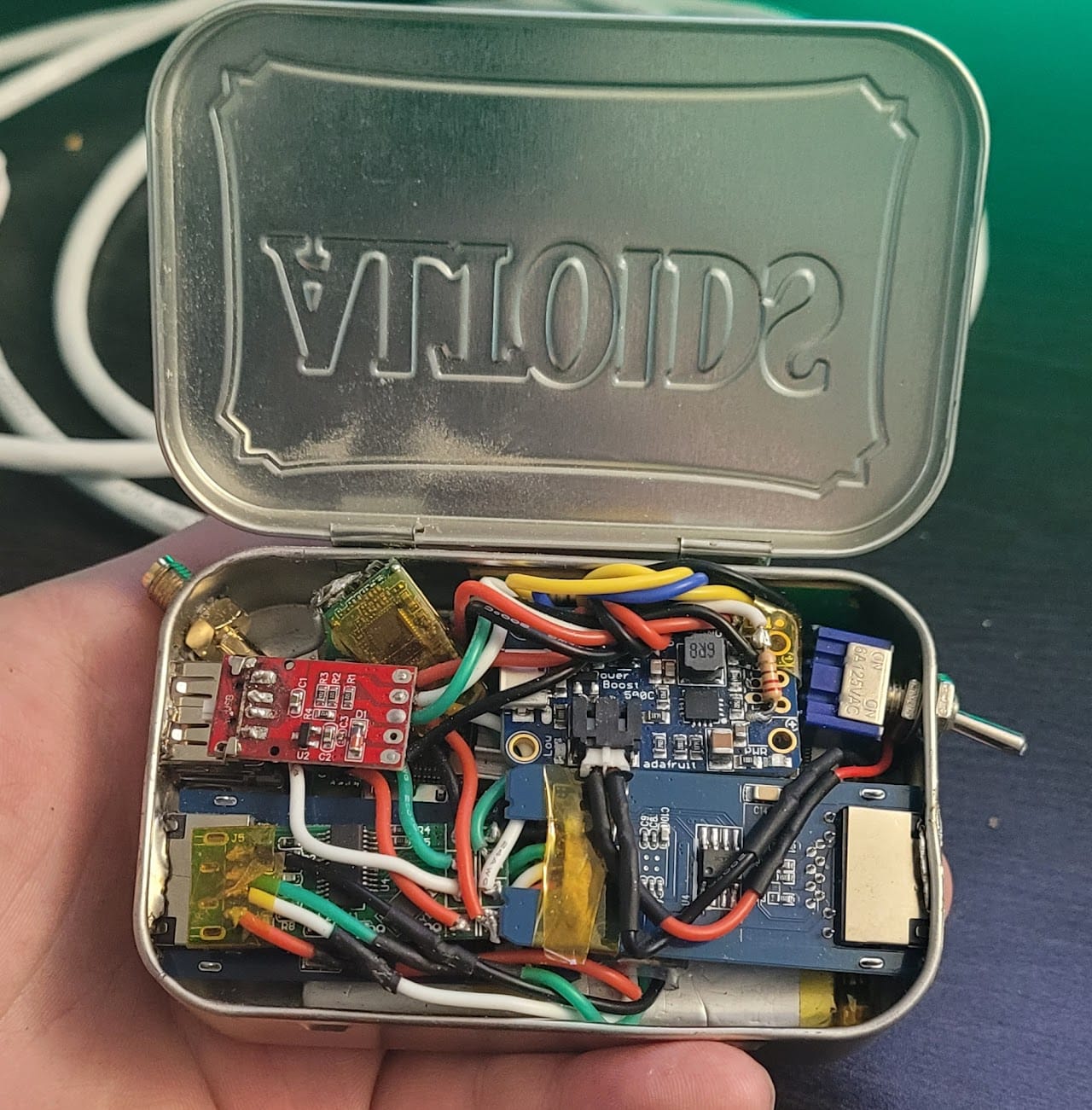Hiding in plain sight - Altoids wifi and network hack

n the world of DIY tech and security projects, the Raspberry Pi is the quintessential Swiss Army knife. With its compact size and versatile capabilities, it’s the perfect choice for a range of creative endeavors. For my latest project, I decided to take stealth and functionality to the next level by creating a hidden hacking device inside an Altoids tin.
This discreet device is capable of operating remotely or through a serial connection and runs on a portable battery designed to last for about an hour. Here’s how I built it and the thought process behind its design.
Side connections (I know it doesn't look pretty, but it works.)
Materials
- Raspberry Pi Zero W https://www.amazon.com/Raspberry-Zero-Bluetooth-RPi-2W/dp/B09LH5SBPS/
- 2x ethernet adapters (100mpbs) https://www.amazon.com/gp/product/B00ET4KHJ2
- Wifi adapter that supports packet injection.
- USB Hub and USB ports for soldering
- USB to serial console: https://www.amazon.com/gp/product/B07D9R5JFK/
- 3.7V 3000mAh battery https://www.amazon.com/gp/product/B07TTD445R
Usage:
Network capture and Wifi Testing
Step-by-Step Build
1. Prepare the Tin
- Drill small holes for USB, power, or ventilation if necessary.
2. Fit the Components
- Place the Raspberry Pi Zero W inside, ensuring it fits snugly but with enough clearance to avoid overheating.
- Connect the battery and secure it in a corner. If you’re using switches, wire them to the battery for easy on/off control.
3. Install the Software
- Flash the microSD card with a lightweight OS like Raspberry Pi OS Lite or Kali Linux.
- Preload hacking tools like Aircrack-ng, Wireshark, or custom scripts for your intended use.
- Configure Serial or SSH or remote access.
4. Enable Connectivity
- Set up the Pi’s Wi-Fi in AP mode to allow devices to connect directly, or configure it to connect to a local network for external access.
- Alternatively, ensure the USB to Serial adapter is correctly configured for direct connections.
5. Test the Setup
- Power the device using the battery and check the runtime.
- Test remote and serial connections, ensuring all software tools run smoothly.
Use Cases
Here are some practical (and ethical!) scenarios for using the Altoids Hacker Box:
- Penetration Testing
Deploy the device in a test environment to evaluate the security of wireless networks, IoT devices, or physical spaces. - Learning and Experimentation
Use it to practice coding scripts, testing software tools, or experimenting with wireless protocols. - Covert Operations
Its inconspicuous design makes it ideal for security audits where stealth is a priority.
Challenges and Lessons Learned
While building the Altoids Hacker Box, I encountered a few challenges:
- Heat Management: The small, enclosed space can lead to overheating. Insulation and occasional ventilation holes help mitigate this.
- Battery Life: The one-hour runtime is suitable for quick tasks but could be extended with a larger battery at the cost of portability.
- Ethernet card: Due to the USB limitations of the raspberry pi zero, the max throughput of the network card is 100mbps.
Final Thoughts
The Altoids Hacker Box combines creativity, functionality, and stealth, making it a unique addition to any maker’s toolkit. Whether you’re exploring the world of ethical hacking or just love tinkering with Raspberry Pi projects, this covert device is a fun and practical project to undertake.